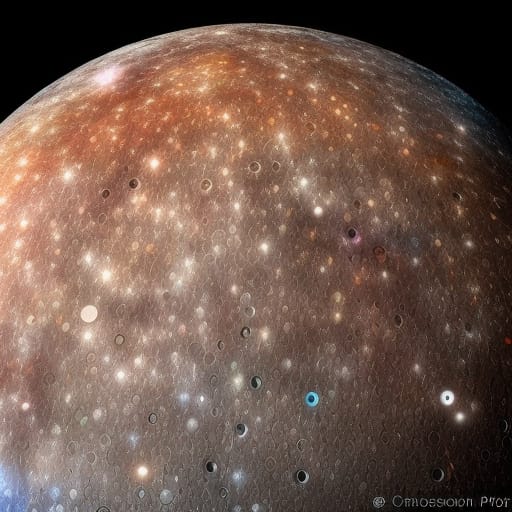Space: Mercury

Mercury is the smallest and innermost planet in our solar system, and it has some unique characteristics that make it an interesting subject of study. Here are the important aspects of Mercury:
Distance and size: Mercury is located about 57.9 million kilometers (36 million miles) from the Sun, and has a diameter of approximately 4,880 kilometers (3,032 miles), making it slightly larger than Earth's moon.
Composition: Mercury is a terrestrial planet with a rocky surface and a partially molten metallic core, primarily composed of iron. Its thin atmosphere, known as an exosphere, is made up of atoms blasted off the surface by solar radiation and contains traces of hydrogen, helium, oxygen, sodium, calcium, and potassium.
Orbital and rotation period: Mercury has an elliptical orbit, taking 88 Earth days to complete one trip around the Sun. Its rotation period is 58.6 Earth days, which means that a single day-night cycle on Mercury lasts for two-thirds of its orbital period, or 176 Earth days.
Temperature: Due to its proximity to the Sun, Mercury experiences extreme temperature variations. During the day, temperatures can reach up to 430°C (800°F), while at night they can plummet to -180°C (-290°F).
Surface features: Mercury's surface is heavily cratered, resembling Earth's moon. It also has large cliffs, or scarps, which are believed to have formed when the planet's interior cooled and contracted. The largest known crater on Mercury, Caloris Basin, has a diameter of approximately 1,550 kilometers (960 miles).
Magnetic field: Mercury has a weak magnetic field, which is approximately 1% the strength of Earth's. This magnetic field is thought to be generated by the planet's partially molten core.
Exploration: NASA's Mariner 10 was the first spacecraft to fly by Mercury in the 1970s, followed by the MESSENGER mission, which orbited the planet from 2011 to 2015, providing valuable data and images of its surface. The European Space Agency (ESA) and the Japan Aerospace Exploration Agency (JAXA) launched the BepiColombo mission in 2018, which is expected to arrive at Mercury in late 2025 to further study the planet.
Lack of moons: Unlike other terrestrial planets in our solar system, Mercury has no natural satellites (moons).
Observing Mercury: Mercury can be challenging to observe from Earth due to its proximity to the Sun. However, it can be seen with the naked eye during certain times of the year, appearing as a bright star-like object close to the horizon shortly after sunset or before sunrise.
Mythology: Mercury is named after the Roman messenger god, who was known for his speed and agility. This name was given due to the planet's rapid movement across the sky. In Greek mythology, the planet was known as Hermes.